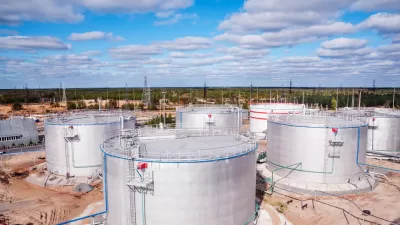Using the term 'oil supply crunch' as opposed to 'peak oil', this British report indicates that the oil crisis will hit by 2013, with prices jumping to $200/barrel. It states that the problem is not insufficient oil but obstacles to its extraction.
"While there is plenty of oil in the ground, companies and governments were failing to invest enough to ensure production," according to the Chatham House report.
"In reality, the only possibility of avoiding such a crunch appears to be if a major recession reduces demand - and even then such an outcome may only postpone the problem," author Professor Paul Stevens said in The Coming Oil Supply Crunch.
From report (pg. 9):
"The main hypothesis of this report is simple. Unless there is a collapse in oil demand sometime within the next five to ten years, the world will experience a serious oil ‘supply crunch'. This will be nothing to do with below ground resource constraints or arguments to do with ‘peak oil'. Rather, it will be the result of inadequate investment by international oil companies (IOCs) and national oil companies (NOCs) which means that below-ground oil resources will not be converted into producing capacity."
Chatham House press release: The Coming Oil Supply Crunch
Chatham House Report: The Coming Oil Supply Crunch (38-page PDF)
Thanks to John Hartz
FULL STORY: Oil 'could hit $200 within years'

Manufactured Crisis: Losing the Nation’s Largest Source of Unsubsidized Affordable Housing
Manufactured housing communities have long been an affordable housing option for millions of people living in the U.S., but that affordability is disappearing rapidly. How did we get here?

Americans May Be Stuck — But Why?
Americans are moving a lot less than they once did, and that is a problem. While Yoni Applebaum, in his highly-publicized article Stuck, gets the reasons badly wrong, it's still important to ask: why are we moving so much less than before?

Using Old Oil and Gas Wells for Green Energy Storage
Penn State researchers have found that repurposing abandoned oil and gas wells for geothermal-assisted compressed-air energy storage can boost efficiency, reduce environmental risks, and support clean energy and job transitions.

Greening Oakland’s School Grounds
With help from community partners like the Trust for Public Land, Oakland Unified School District is turning barren, asphalt-covered schoolyards into vibrant, green spaces that support outdoor learning, play, and student well-being.

California Governor Suspends CEQA Reviews for Utilities in Fire Areas
Utility restoration efforts in areas affected by the January wildfires in Los Angeles will be exempt from environmental regulations to speed up the rebuilding of essential infrastructure.

Native American Communities Prepare to Lead on Environmental Stewardship
In the face of federal threats to public lands and conservation efforts, indigenous groups continue to model nature-centered conservation efforts.
Urban Design for Planners 1: Software Tools
This six-course series explores essential urban design concepts using open source software and equips planners with the tools they need to participate fully in the urban design process.
Planning for Universal Design
Learn the tools for implementing Universal Design in planning regulations.
Heyer Gruel & Associates PA
City of Moreno Valley
Institute for Housing and Urban Development Studies (IHS)
City of Grandview
Harvard GSD Executive Education
Salt Lake City
NYU Wagner Graduate School of Public Service
City of Cambridge, Maryland



























